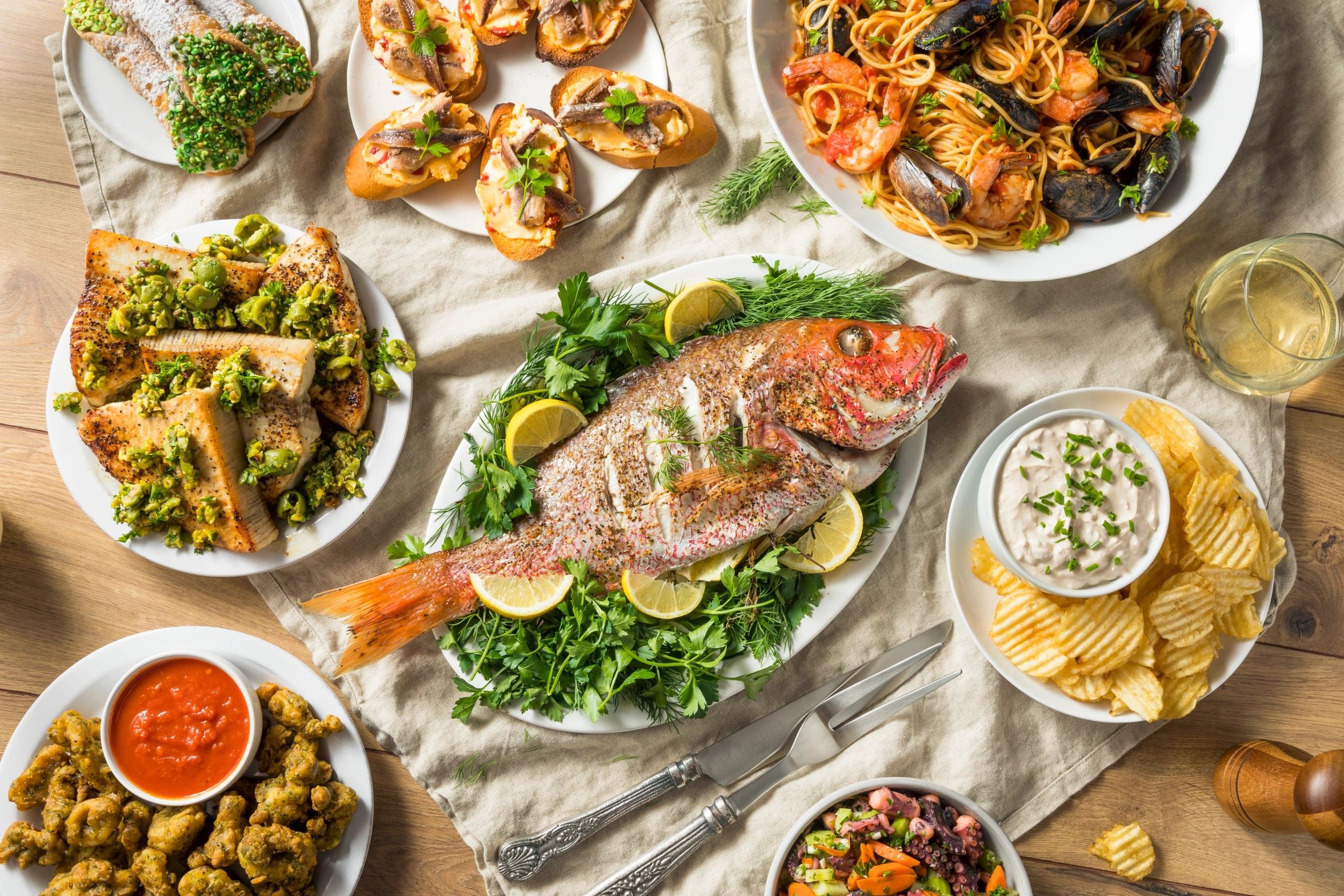Is the Feast of Seven Fishes Italian
The fish. That is what we called it when I was a kid. When someone asked if you were making the fish for Christmas Eve, you knew they meant a large feast with no meat. A meal for which my mother deployed all her cooking skills. After spending days getting ready, when the big day finally arrived, she would have two kitchens (we had a second kitchen in the cellar, like all good Italian American families) working at total capacity. While some aspects of the dinner would vary, every year began with aglio e olio. We could also count on finocchio, fried baccala, and stuffed calamari. The fish was a significant part of Christmas Eve for me as it was many other Italian Americans.
It didn’t graduate to The Feast of Seven Fishes until much later in my life. At first, I thought it was a term used in Italy that I hadn’t heard. Then I found that most of the Italians I met – Italian Italians, not Italian Americans - weren’t familiar with the term either. Some were not even aware of the tradition. So I began to suspect that Italian Americans created the Feast of Seven Fishes. If not the custom, then at least the phrase.
My suspicion was somewhat confirmed when I referred to The Art of Italian Cooking by Maria lo Pinto and Milo Miloradovich, first published in 1943. In the third chapter, they list traditional Italian meals for various occasions. While noting that the meal is meatless, they do not refer to The Feast of Seven Fishes when discussing Christmas Eve. The meal described for that night is a modest one. Although I would agree with those that this one book is not necessarily the authoritative source on Italian customs, it is a source worth noting. Many Italian and Italian Americans accepted the book in its time with references to eating customs in Italy going back to the nineteenth century when the nation of Italy was yet in its infancy. Neither did I find any mention of it in any histories of Italian cuisine that I referenced.
Beyond the mere phrase, the meal itself seemed inconsistent with Christmas Eve. The day before Christmas was one of penance, a time to abstain from things of the flesh. It was a time to prepare our hearts and souls for the coming of The Lord. I was also confused as a kid. How could you receive communion at midnight mass? We were supposed to fast before mass, not to mention that it would have been impossible to stay awake after such a big meal.
As it turns out, the custom of a large Christmas Eve meal comes from Italy, while Italian Americans seem uniformly to accept seven as cannon, it varies in Italy. Some have seven courses, one for each of the sacraments of the Catholic Church, while others have 13, one for each of the Apostles plus Jesus. Yet others will have nine, which I guess is the trinity squared.
Although I am not aware of any regional differences concerning the number of courses, what is on the menu varies by region. For example, you can expect anywhere along the Adriatic to be treated to eel served in many different ways, including, but not limited to, grilled, fried, stewed, pickled, or roasted. Personally, I can live without ever eating eel again regardless of how it is prepared. While my Sicilian mother fried our baccala in Naples, it frequently is served in tomato sauce. Romans would fill out the meal with pezzetti, vegetables that were batter fried. In the north, Lombardy and Piedmont, they enjoy lasagna whose wide pasta reminds them of the swaddling of the Christ child.
As with many of our Italian American traditions, rather than preserving something done in Italy, they evolved to become something a little different. The Feast of Seven Fishes seems to be an example of such an evolution. I believe this happened with our customs for two reasons. First, immigrants who once had little interaction with people from other regions began to live in close proximity and intermarry. What became the accepted Italian tradition was what was common between regions or adapted to become compatible. Also, many Italian Americans abandoned or forgot aspects of our cultural heritage during World War II. As we rediscover our heritage, we adopt folklore that isn’t as reliable as we might like.
Although The Feast of Seven Fishes might be an Italian American adaptation of Italian tradition, we should not look at it as somehow illegitimate. We define our traditions. Our acceptance of them makes them legitimate. They are the things that unite us. So, even though we called it The Fish when I was a kid, when I celebrate with my family, we call it The Feast of Seven Fishes.
I wish you all the Merriest of Christmases.
To read more about Italian and Italian-American culture read my book, Italianità: The Essence of Being Italian and Italian-American.
